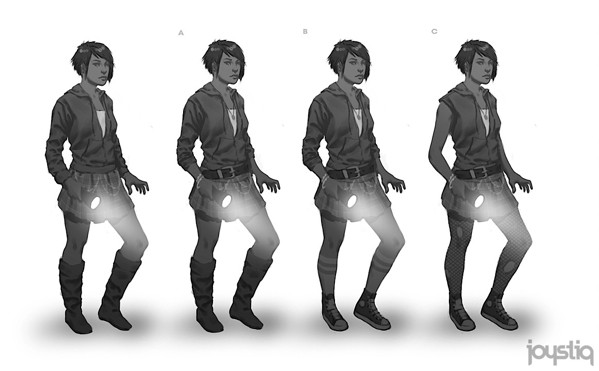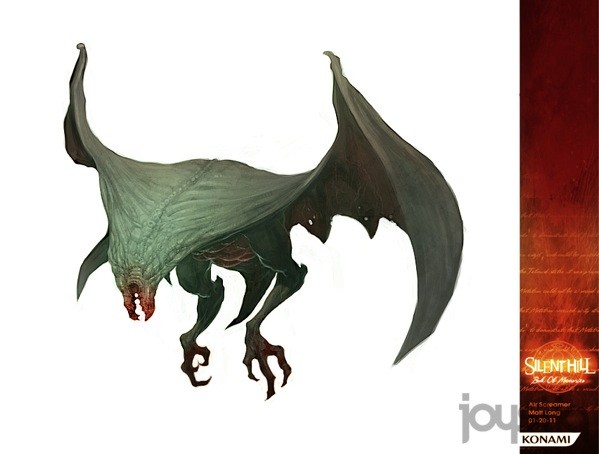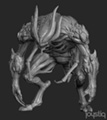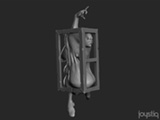Development timeline: Silent Hill Book of MemoriesPublication date: 2012.07.31 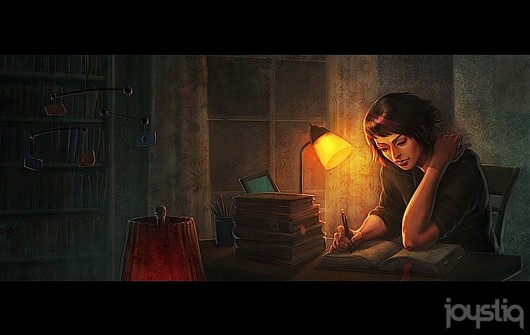 Last year, we got our first look at Silent Hill: Book of Memories, a PlayStation Vita game that inspires curiosity, to say the least. As a top-down, multiplayer Silent Hill, it's an oddity among horror games and among Silent Hills. We wanted to know more about how this unusual game came to be, so we went to publisher Konami and developer WayForward to get some insight on the development process behind Book of Memories. The two companies responded with a surprisingly detailed development timeline for Silent Hill: Book of Memories, and a wealth of never-before-seen images from throughout the process, including screenshots of a PC demo WayForward put together to convince Konami they were the right team for the job. We've also spoken at length to Konami producer Tomm Hulett and WayForward Director Adam Tierney about the motivations behind the game's design. Summer 2010: Konami initiates discussion of the concept "The three guiding principles we were given to work with were something like "Vita-centric Silent Hill", "Not traditional", and "Different every time you play,'" Konami producer Tomm Hulett told Joystiq. "It's always an interesting challenge being given a franchise and told to create something that fits, but is totally different. It comes with a lot of freedom – but an uneasy freedom. How different is too different? If the concept is too distant from the source material, it won't be recognizable as Silent Hill. If it's too similar, however, then all those new, exciting differences will be seen as flaws rather than purposeful decisions." August: Initial concept art produced August 27: Final internal pitch completed, project officially begins Hulett said: "There was a lot of pressure for a top-down style camera, which actually provides a new view on the Otherworld – allowing the player to gaze down into a kind of unending chasm stretching far down below. And since we were aiming for a long-term game that players come back to repeatedly for months, RPG elements worked their way in as a natural vehicle for that. When you get top-down, RPG, different every time you play ... the game turns into a style of dungeon crawler, of course – but a very accessible one. Hulett said Book of Memories, being a Silent Hill game first, is more accessible than most dungeon crawlers. "You won't have to master Item Crafting or commit yourself to a specific Skill Tree, for example. It's all about exploration and survival, like the main SH games." September: Konami approaches developers with concept September 14: The main character design is completed, described as "Rocker, Female"
September 21: Developer WayForward Technologies submits its treatment for the as-yet nameless Silent Hill project November 4: WayForward submits a proof-of-concept demo The PC-based demo revealed to Joystiq uses a more Silent Hill-esque perspective instead of the top-down camera angle employed by Book of Memories. The shots in our gallery include a character in a hoodie exploring an Otherworld-like location, bathed in red light, with grates on the floor and windows. A Robbie the Rabbit doll, a series mainstay, can also be seen. The gallery also has a few pieces of environmental art that were used for the demo.
November 5: Konami selects WayForward as developer "WayForward was brought in after Konami had solidified the broad strokes of the game, which was to be multiplayer, feature RPG stats, and take place in an endless 'dungeon-crawler' style randomized environment," director Adam Tierney, of WayForward, told Joystiq. "The idea was to create a Silent Hill game that friends could play together, with enough content to last potentially months of gaming, while still offering handheld-appropriate, bite-sized play sessions." Late November: Design meetings between WayForward and Konami begin December 15: WayForward starts prototyping the game on PC in Infernal Engine January 19, 2011: Pre-production on character assets begins January 28: Procedural level generation is introduced in a new build February 2: Concept images for 7 elemental environments finalized 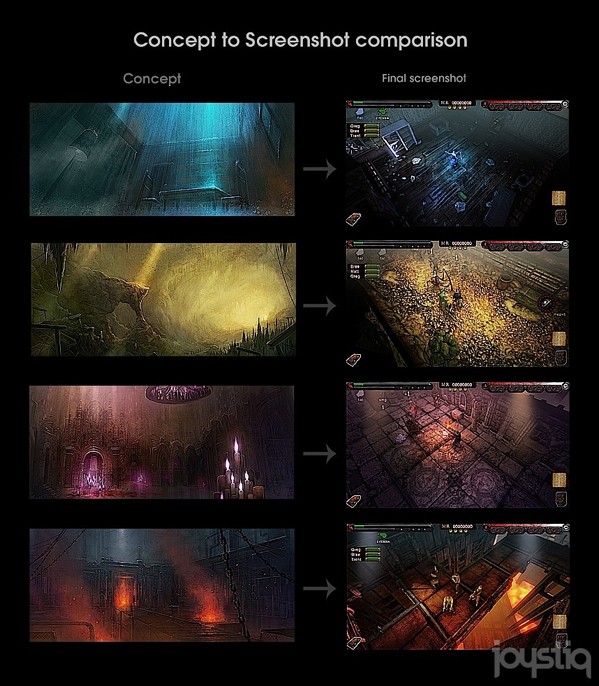 February 2: Key gameplay systems are planned out February 22: Main character archetypes finalized Book of Memories allows players to customize their character's appearance, and to choose from one of five archetypes that serve as character classes: "jock," "bookworm," "rocker," "goth," or "preppy." February 28: Playable PC build demonstrates combat system "We actually tried, at the start of development, faithfully recreating the basic combat and enemy behavior of the previous SH games exactly," Tierney said. "But given the new camera, multiplayer, and auto-generated world, it just fell flat. What's scary when you're wandering tight hallways alone isn't scary from a wider perspective, while playing with friends. So we had to find the fear again. "The changes we made to some of the enemies and combat might initially shock some of the fans," he said, "but the end result is very engaging and delivers the same fear, dread, and apprehension that you'd find in a more traditional SH game." Those changes essentially include an actual combat system. Silent Hill games have never emphasized combat, letting players awkwardly swing a pipe around at best. However, Book of Memories has combos. Successfully timed combos cause enemies to drop Karma, a "resource that enables special abilities – separate from Skills you can equip to enable more strategic maneuvers," Hulett explained. "Our goal was to create an action RPG where the player developed their own play style and way of seeing the game, rather than simply grinding to gain power. I'm eager to see how groups that play together often will carve out organic party roles, rather than simply relying on their classes to give each person a job in any given situation." March: Konami begins speaking to composer Daniel Licht about working on Book of Memories Licht is best known for his work on the TV show Dexter, but has also been the go-to composer for the Silent Hill series starting with Silent Hill: Downpour. The previous composer, of course, was Akira Yamaoka, who also acted as a producer on the games since Silent Hill 3. Yamaoka left Konami in 2010 to join Grasshopper Manufacture. March 7: Enemy programming begins
March 17: "Joke Ending conceptualized far before it should ever have been a concern" For most of these timeline entries, we haven't used Konami's exact wording. But the above is exactly as it was told to us by the publisher, and good news for Silent Hill ufologists and/or dog enthusiasts. It's worth noting that Konami producer Tomm Hulett, who spoke to us for this feature and helped put this timeline together, has a very personal history with Silent Hill joke endings, having voiced James Sunderland in the UFO ending of Silent Hill: Shattered Memories (which he also produced). March 18: Story system conceptualized "The complex story structure is one of the most fascinating things about the game, and I think something that will surprise a lot of people because it's hard to convey in previews (so has gone largely unnoticed so far)," Tierney said. "As in previous games like SH2 and Shattered Memories, your actions in game change the story - not just the endings, but all story elements as they happen. "However in this game, you have much more of a constant, direct way to influence and control March 22: Konami starts auditioning motion capture actors March 25: Final story concept proposed April: Final story concept approved by Konami "I wanted to make sure to retain the one quality Silent Hill has above many other games: its mature story," Hulett said. "The plot in any given SH is very personal to the main character, and delves into the shadows of the human psyche. By contrast, it's hard for me to get into the stories of many multi-player dungeon crawlers because it feels like I'm one faceless hero in a sea of heroes going through the same motions for the same reasons." With multiplayer, Book of Memories has to tweak the story conventions to be about a group experience. "We knew that BoM had to stay on the 'Silent Hill side' of things and deliver a personal story. The twist is, this time it's the player in Silent Hill, undergoing its trademark brand of anguished personal introspection. As an added bonus, the story itself is like one gigantic puzzle, so interested players can log extra hours cracking that wide open." April 4: Konami begins shooting motion capture May 5: "Boss Creature" concepts are finalized May 11: Cinematics planning begins June 13: Konami evaluates the game design, "unifying central systems, etc." 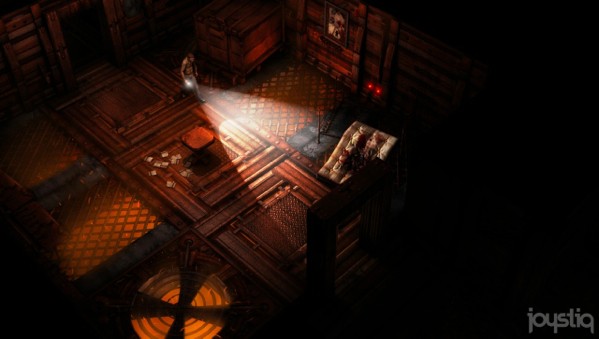 Lighting and effects concept render July: Scripts for the cinematics are completed August 4: Dialogue is recorded for Howard Blackwood, the character who presents you the Book of Memories August 8: "Design Audit," during which any unfinished gameplay systems were finalized. August 9: Script for the all-important "joke ending" is complete August 21: All voice scripts finished August/September: Voice recording begins at PCB Productions "Not only did each possible main character record the game dialogue several times," Hulett said, "and the text was altered for every possible scene variation, but this happened in 8 different languages." September: Localization begins September: Daniel Licht gives Konami an early version of the title theme, called "Now We're Free" September 15: Licht submits his first attempt at a stage theme, for "Water World" "It's amazing," Hulett said. September 29: Story text is completed October 8: The "Joke Ending" artwork is completed October 24: Silent Hill: Book of Memories goes into "alpha" status October 21: "Love Psalm," a new song based on the song of the same name from Silent Hill 2, is completed The song features Akira Yamaoka and Silent Hill singer Mary Elizabeth McGlynn, and was composed by Rob King and Troy Baker – a voice actor who played James Sunderland in the recent HD version of Silent Hill 2. November: QA testing begins – it continues through spring 2012 December: Localization completed December: Licht completes his final track for the soundtrack, "Rust-World" January 15, 2012: Book of Memories hits beta February 27: "Complex story system" finalized Spring: North American version completed April 17: The soundtrack is released, well ahead of the game October 2012: Planned worldwide release Originally set for release in February alongside the Vita hardware, Book of Memories is now due in October. We just have to wait until then to see the results of all this work. |

